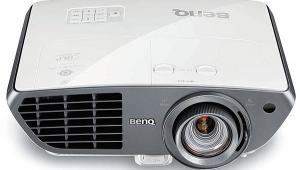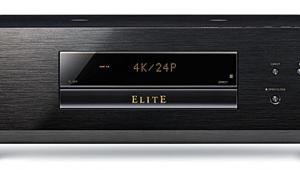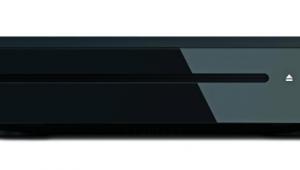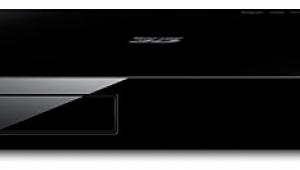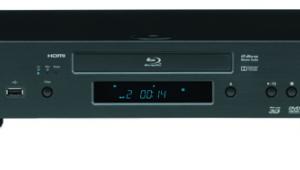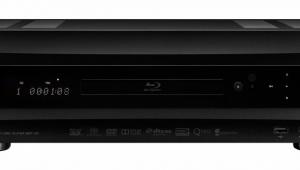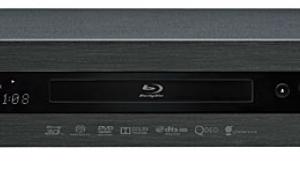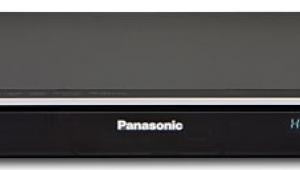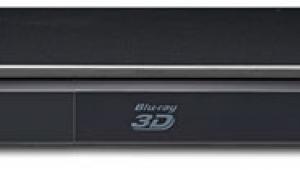Review: Oppo BDP-105 universal disc player Page 2
Performance
Oppo primarily bills the BDP-105 as a Blu-ray player, so it made sense to start with video first. The Oppo aced the Jaggies A and B tests on the HQV disc, both of which check a player’s ability to deinterlace motion video. Moving on to the Spears & Munsil HD Benchmark disc, I ran Luma and Chroma Multiburst, Chroma Upconversion error, 2:2, 3:2, and mixed film/video titles tests. The 105 passed all with flying colors.
Oppo players provide varying video capabilities on their HDMI 1 and 2 outputs. (Qdeo processing, which offers a wider range of custom picture adjustments, is only found on HDMI 1.) When I tested out the Noise Reduction adjustment on cable TV channels, I found that it did help to a degree, though it also softened pictures above the +3 step. (Adjustment steps beyond that point are in intended for low-rez sources like Web video, though you unortunately can’t apply this processing to Netflix and YouTube content streamed directly by the Oppo.) Interestingly, the Sharpness control didn’t add the “ringing” artifacts that this type of adjustment typically brings about; instead, it enhanced picture clarity — not a huge deal for high-def hockey, but a boon for Judge Joe Brown (daytime TV...). Of course, Blu-rays played on the 105 looked wonderfully crisp and pristine — something I fully expected, having previously tested Oppo’s BDP-93.
I used the player’s bitstream output to convey Dolby TrueHD and DTS-HD Master Audio soundtracks to the Anthem when watching movies, and also played a few SACD and DVD-Audio discs, allowing the player to first convert the DSD signal on SACD to multichannel PCM. Both formats spun seamlessly on the 105. When I listened to a Sony Classical SACD of Bach Toccatas and Fugues played by organist E. Power Biggs, the sense of 3D envelopment provided by the 5.1-channel mix vividly transported me to the cavernous cathedral at Freiburg, Germany where it was recorded. Listening to the title track from the DVD-Audio release of King Crimson’s Discipline gave me a similar, though less grandiose and reverb-laden, sense of immersion in a 3D audio space.
Listening to CDs via the 105’s analog audio outputs, I detected an increase in dynamic heft and detail as compared with the BDP-93 analog outputs — the quality of which I’m going to go out on a ledge here and presume is the same as the company’s current BDP-103 player. On a reference track like Mazzy Star’s “Flowers of December” (from Among My Swan), the solo violin that weaves around Hope Sandoval’s laconic vocals sounded thin on the BDP-93 as compared with the 105. On the latter, it had a richer and more nuanced tone, as did the harmonica solo that follows the song’s chorus. The same observations also held to a degree when I switched over to using the player’s digital output: The sound with the Anthem handling the digital-to-analog conversion seemed a bit less open and dynamic.
After plugging my Mac laptop into the Oppo’s back-panel USB DAC input, I queued up some recent HDTracks.com high-rez FLAC downloads. Miles Davis’s In a Silent Way, a recent offering from the site, provided a powerful example of the player’s computer-audio abilities. The texture of Dave Holland’s gently bowed bass at the outset of the title track was clearly audible, and Davis’s trumpet in the song’s next section sounded full and punchy. It was a revelation listening to this version alongside my CD of the same album, which sounded smoothed-over and lifeless by comparison.
Ergonomics
One more feature of the 105 that some might find useful is HDMI Audio Return Channel, which lets you route digital audio from a connected TV back through the player to your preamp or receiver. The catch here is that your set needs to support ARC, and only recent-model TVs do that. To test things out, I connected the Oppo to a Sony XBR-55HX950 and was able to send Dolby Digital sound from broadcast TV channels back through it to the Anthem preamp, which doesn’t otherwise support ARC. The only drawback was having to first toggle through the player’s inputs using the remote control — a process that I wished could be automated, or at least made more streamlined.
Another key feature of the 105 is its ability to serve as a DLNA digital media player to stream files from a computer or network-connected hard drive. When you open the player’s Network panel from its GUI, all available media servers pop up, and you can browse their contents via a folder-type directory. But I found playing files in this manner to be slow and clunky; compared with the more elegant media server solutions I’ve checked out from companies like Meridian/Sooloos, Naim, Olive, and even Apple, the experience was primitive.
I had much better luck using the 105’s other DLNA capability: digital media renderer. (A DMR simply plays the audio/video/photo files delivered to it over a network, as opposed to retrieving and playing them.) Tapping the Play To feature in Windows Media Player, I was able to easily queue up and stream individual files, albums, and playlists via Wi-Fi directly to the 105 from my laptop for instantaneous, unfettered playback — sweet.
Bottom Line
Oppo’s BDP-105 continues the company’s strong tradition of making players that go beyond the rudiments of mere disc playback to offer something extra. In this case, there’s plenty to go around, but the main reason you’d pay more for a 105 is analog audio performance, and that’s where Oppo’s flagship really shines. As much as I appreciated the player’s video quality when watching movies, listening to CDs, SACDs, DVD-As, and computer-sourced audio proved even more rewarding. At $1,199 the BDP-105 is anything but cheap for a Blu-ray player, but if all-around great sound is just as important to you as a great picture, it’s well worth it.
- Log in or register to post comments
